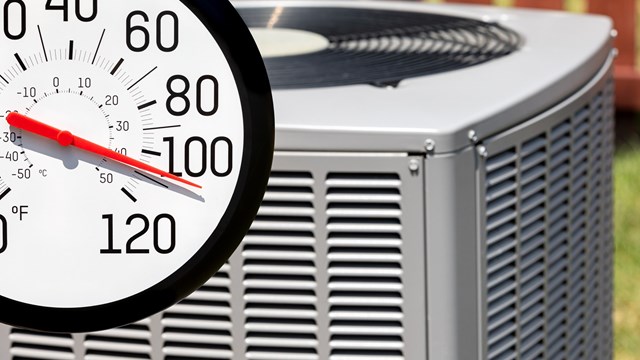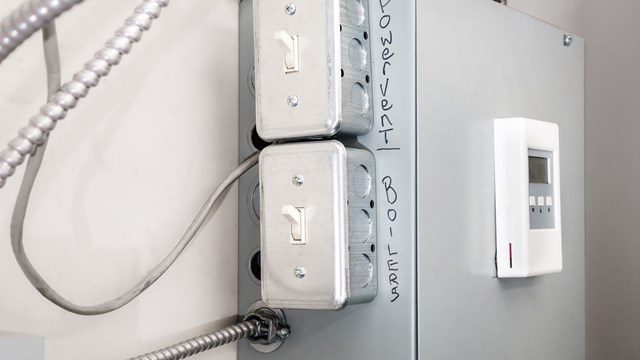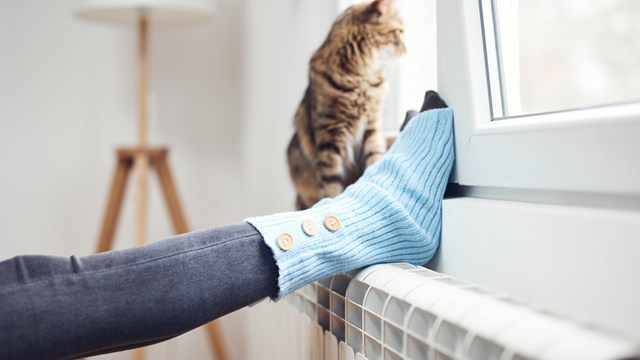
Say you’re in bed, and you hear what sounds like the shower going. It’s late, and you’re tired, so you pay it no mind. You wake up at 4 a.m. to get a glass of water and find half the rooms in your apartment flooded— you forgot to turn the shower off! You throw blankets and towels on the floor to soak up the water and call your building’s maintenance staff.
With the aid of a dehumidifying machine, they’re able to get most of the moisture out of the flooded areas. But the wooden floor tiles themselves are heavily damaged, and a fair amount of water seeped into your downstairs neighbor’s unit, damaging the ceilings, walls and some artwork. Who’s responsible for restoring the flooring? And what about the water that poured into the apartment below?
The Basics
Finding out what systems and features in an owner’s unit are his or her responsibility and which are the association’s responsibility can be very complicated. Many principles are universal but other details can vary from building to building depending on the rules of that particular community.
According to Lee Heller, a director of business management with Associa, a management company with locations across the U.S., owners are “typically responsible for the interior of their unit, the wall, ceiling and floor coverings. There’s a hot water heater or an air handler, their appliances, the plumbing and electrical panel.” Unfortunately, this would likely include those wooden floor tiles, unless your building administration decides to be generous.
“If it’s not spelled out in detail which quite often it isn’t, the general rule is, whatever is within the boundaries of the unit has to be in the responsibility of the unit owners,” says attorney Saul J. Feldman, founder of the Boston law firm, Feldman & Feldman. “Studs in; unit owners... Studs out; association.”
An exception, however, is piping inside the walls, says Steve Margolis, president of Margolis Management & Realty, LLC in Hamden, Connecticut. “For example, the most common one would be in the bathroom. There may be a shower diverter or the shower or the handle for the hot, cold water or the drain that is part of the tub. So the question is—because the tub and everything attached to it more than likely belongs to the unit owner —if the unit owner can’t get to it, to repair it when it’s ‘broken,’ how do you, then, make the unit owner responsible for repairing it?” Margolis explains.
At the same time, he notes, homeowners can’t simply shrug off these plumbing problems as the association’s responsibility. “Where it might be a little clearer,” he says, “is if it’s determined that it’s been an ongoing problem and the unit owner never reported it—or the resident, the occupant of the unit never took care of it—and water was leaking over and over and over again. The association might look to the unit owner just from the negligence standpoint and make that person responsible for it.” As with so many issues, there are likely to be more shades of grey than those of black and white.
“In a perfect world,” Feldman says, “the condominium documents would really answer the question… But some documents are not drafted as well as others.”
Gray Areas
So, what else is the building or development responsible for? An association is responsible for whatever is considered part of the structure of the building, as well as common and limited common elements. This would include the hallways, lobby, elevators, basement, boilers or rooftop A/C, plus the electrical wiring from the point it enters the building from the street to the point it enters the circuit breaker or junction box.
All this talk of private usage, common and limited common elements can become quite confusing. “In a lot of instances, in many instances, maybe even most instances, it’s not that clear. It’s ambiguous,” Margolis admits.
Places such as the intersection of the wall and a specific piece of equipment are frequent sources of conflict—such as windows, air conditioning equipment and air conditioning sleeves within the walls. Alterations are yet another potentially sticky area—though perhaps a little less so than some others mentioned above, since most communities have the rules and regulations regarding alterations spelled out explicitly in their governing documents. In general, if you do an alteration, you are responsible for it, professionals say.
Most misunderstandings, unfortunately, arise after an incident like water damage or an electric problem has occurred. And that’s when boards realize they need to take a good, hard look at the governing documents to make sure they clearly spell out where the lines of responsibility between the association and owners lie. “And in doing that,” Margolis cautions, “make sure counsel takes a look at it and make sure that what the board is assigning to a unit owner is consistent with what the documents implied—because a lot of times the documents won’t say it, but there might be an implication.”
Feldman agrees that reading existing documents won’t always answer the question of responsibility. “I’m working on something right now in an older building in Boston,” he explains, “and the one issue is water leaks. What happens if water leaks into the unit, and the unit is damaged? I mean on first blush, you would think that the unit owner has to repair, but if in fact it comes from outside through the common elements, then perhaps the association has to repair. But that’s a tricky one because there are questions of negligence and everything else.”
Bottom line: sometimes it will take a trip to a mediator, or to court, to get the final answer.
It’s in the Docs
The most effective way to cut down on all this uncertainty of repair liability—and hopefully prevent it from materializing in the first place—is for residents to know the rules in their building. And for their part, building administrators should make sure the rules are clear, concise and unambiguous.
For owners, learning the rules starts with reading the governing documents, which should contain all the specifics of repair responsibility.
For example, “most documents will be very clear and say that a unit owner is not responsible for structural damage,” Feldman says. Structural components—things like the outside walls—are part of the common elements. “But if the documents are not clearly worded, that’s a big issue.”
“In some cases,” Margolis says, “association boards set their policy that ‘we’re going to handle it this way,’ and a lot of times the unit owners won’t challenge it because they’ll feel, ‘well, that makes sense, that’s fair; I mean, it’s my tub, it’s my sink, I should be responsible for that.’”
“Now other associations might say, ‘Not so—if the pipe breaks between the two walls of unit five, between the left wall and the right wall, some place in the middle of unit five’s dining room, well, it’s obvious that it’s in unit five, and unit five is responsible for it.’”
Adding to potential confusion is the question of where one lives. “In Connecticut, back in 2010, the Connecticut state legislature authorized associations to charge back to the unit owners expenses that arise out of a unit owner’s what they called neglect or willful misconduct or gross negligence.” Associations, he says, should have a maintenance contract or a maintenance schedule when things are supposed to be repaired, or reviewed, or replaced. Some—but not all—documents will spell out that maintenance schedule and responsibility.
To avoid confusion, Feldman says, boards should make a point of having the association documents reviewed, and amended if necessary. “You need to correct the documents. And it should be serious, and it should be done by a lawyer who is a condominium specialist,” he suggests.
The Importance of Insurance
Documents aside, having all shareholders or unit owners carry adequate insurance coverage is one way management can be sure that gaps can be closed and conflicts avoided, Heller says. Such a policy can cover not only personal items such as computers and furniture, but also paint, wallpaper and flooring. Adequate insurance coverage also plays an important role in the intersection of maintenance and repair responsibility, Heller adds.
He illustrates this point by asking readers to visualize a Venn diagram. “One circle is ownership—who owns the item; one is maintenance responsibility; and the third is insurance responsibility,” he says. “With well-written or smart documents, they’re all the same. But unfortunately, many times they are not the same. So in some regions, state statute comes in and says that by law, the association is responsible for the insurance on the air-conditioning system from the roof to the air handler. So in the casualty event—a storm or a fire or whatever—the claim would go through the association’s insurance, and they pay the premium for that.
“However,” Heller continues, “that immediately makes owners think the association is responsible to maintain the air-conditioning system, which it’s not. So when it breaks, or it isn’t serviced regularly, those problems come up and those are the unit owner's absolute responsibilities. On the third circle, let’s say the unit owner owns the air handler in their unit and the air-conditioning compressor on the roof. They own that equipment, but that unit up on the roof is in a common area that’s not necessarily available to unit owners. So, that sometimes creates a problem as well,” he says.
Oftentimes, it’s not easy to determine responsibility for repair elements. Most of the time, whether you’re talking about condos, co-ops or townhomes, when owners take good care of their units, problems won’t occur. For those times when they do, be sure to consult your attorney and building manager and look to your governing documents for answers.
Raanan Geberer is a freelance writer and a frequent contributor to New England Condominium. Editorial Assistant Enjolie Esteve contributed to this article.









3 Comments
Leave a Comment